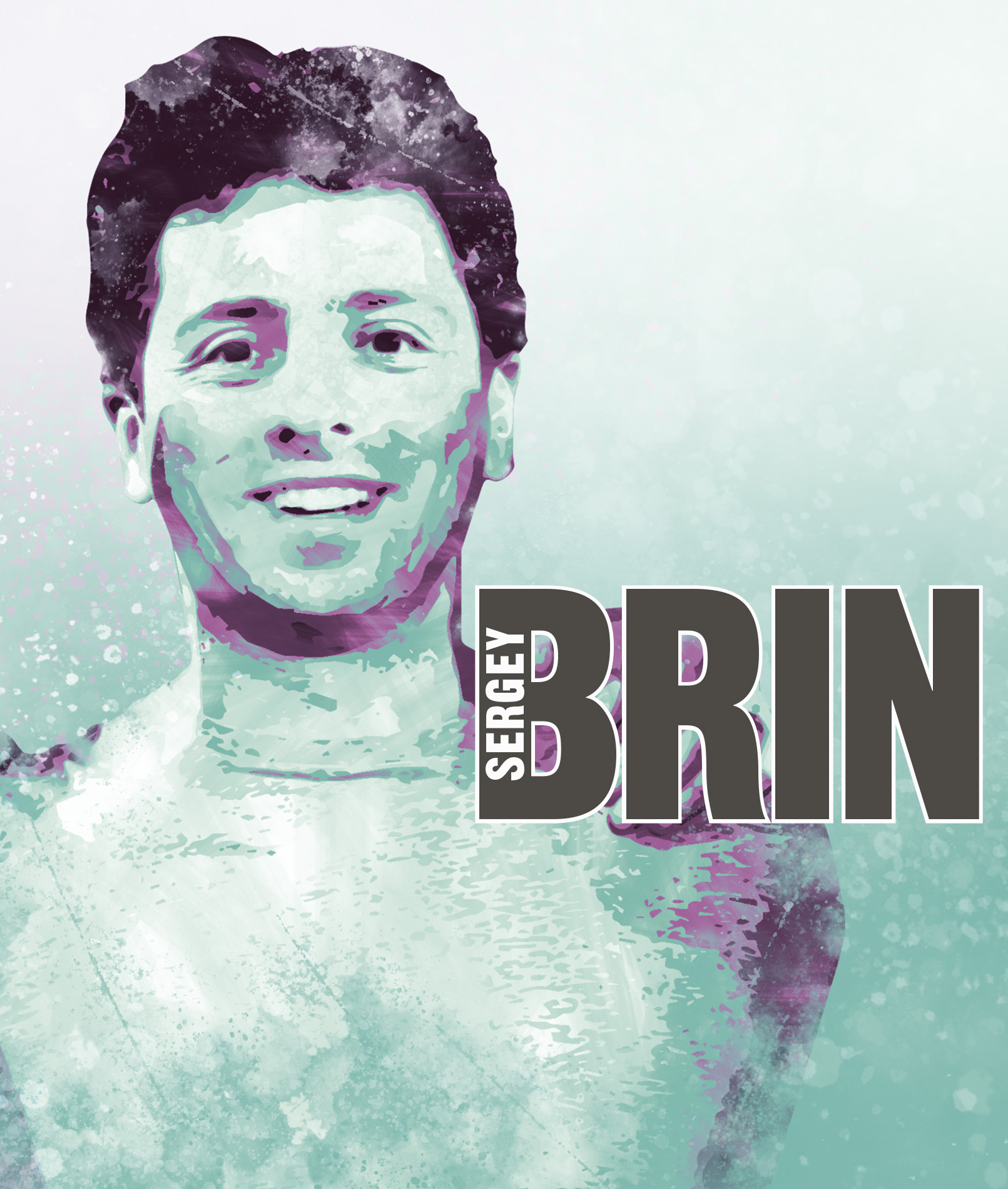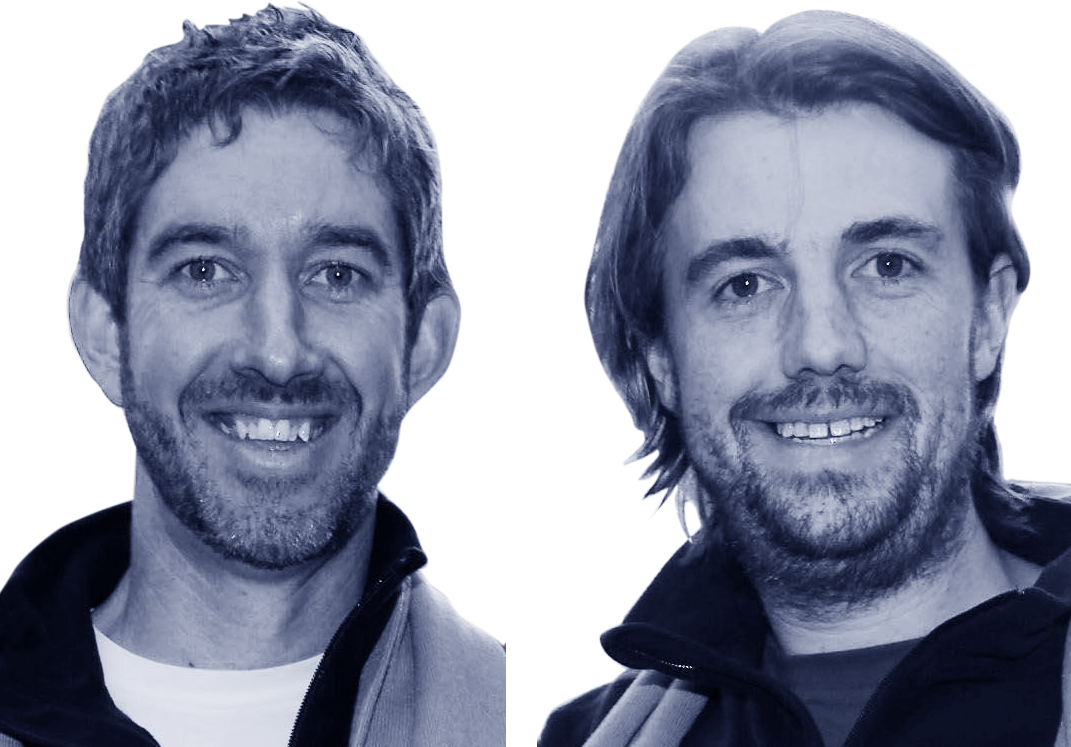
LARRY PAGE
1973–
The son of two computer programming experts, American internet entrepreneur Larry Page cofounded the world-leading search engine Google with Sergey Brin while they were both students. The site immediately transformed access to information on the web.
Lawrence Edward Page spent his childhood surrounded by computers. Born in Michigan in 1973, his father was a computer science professor and his mother was a computer programming instructor. Technology magazines and science books were strewn around his home, and, with the encouragement of his older brother, the young Page often took household goods apart to see how they worked. He was also keen on music, studying the flute, saxophone, and composition, later claiming that music inspired his obsession with timing and speed in computing. In 1995, Page enrolled in a PhD program in computer science at Stanford University, where he met fellow student Sergey Brin. The two went on to develop the search engine Google as part of Page’s PhD research project.
Page’s fascination with technological advances has continued through his involvement with “flying car” start-ups Kitty Hawk and Opener, and a space exploration venture that aims to mine valuable resources from asteroids.
MILESTONES
MEETS SERGEY BRIN
Enrolls in PhD in computer science in 1995; meets Sergey Brin on his first visit to Stanford campus.
DEVELOPS PAGERANK
Creates website ranking algorithm in 1996, which becomes the basis of the Google search engine.
ESTABLISHES GOOGLE
Incorporates Google.com in 1998, moving into its first office—a garage in Menlo Park, California.
GLOBAL ENTERPRISE
Announces the creation of the holding company Alphabet in 2015 to control Google’s diverse portfolio.

SERGEY BRIN
1973–
American computer scientist and mathematician Sergey Brin cocreated Google while studying for a PhD at Stanford University. The search engine’s ability to rank pages according to popularity revolutionized internet usage and made Brin a billionaire.
Born in Moscow in 1973, Sergey Mikhaylovich Brin left Russia with his family to escape Jewish persecution when he was six years old. His parents, both well educated at Moscow State University, found work in the US—his mother as a researcher at NASA’s Goddard Space Flight Center and his father as a professor of mathematics at the University of Maryland. Brin’s father encouraged his numerical ability, and Brin graduated with a degree in computer science and mathematics at the young age of 19. In 1993, Brin enrolled for a PhD in computer science at Stanford University and, while participating in an orientation event for new students, met Larry Page. Despite the mutual antipathy between the pair, Brin soon joined Page’s project to investigate how websites linked to each other. His mathematical skills helped create a system for ranking the links by importance. By 1996, the pair had created the search engine algorithm to power Google.
Since establishing Google.com in 1998, Brin has concentrated on developing new technologies as part of the company’s “moonshot” innovation program, including self-driving cars, smart glasses, sustainable energy sources, and the use of drones for deliveries.
MILESTONES
MOVES TO THE US
In 1979, emigrates with his parents and brother to the US; his father encourages his interest in math.
STUDIES AT STANFORD
Wins National Science Foundation scholarship in 1993 to study at Stanford, where he meets Larry Page.
CRAWLS THE WEB
Helps Page develop system for counting web page links, resulting in the Google search engine in 1998.
LOOKS TO THE FUTURE
Debuts innovative face computer Google Glass in 2012, as part of his ongoing product research.

Page and Brin added mapping to their Google products in 2004 when they acquired satellite imaging company Keyhole and relaunched it as Google Earth. Their Street View and Google Map functions were introduced in 2005 to aid route planning.

“We want Google to be the third half of your brain.”
Sergey Brin, 2010
Brin was already in his second year at Stanford University when he met Page and had been working on a variety of projects, including a movie-rating platform and a tool for converting academic papers into HTML files. Allegedly, they disagreed about everything at first, but within a year, they had formed a firm friendship and research partnership.
Together with another student, Scott Hassan, who left the group before Google was established, they built a search engine named BackRub. This used an algorithm to count and rank the “backlinks” of individual web pages, allowing pages to be listed in order of importance. Other less efficient search engines at the time used keywords to rank sites. Initially, BackRub operated on Stanford’s servers, but it quickly took up too much bandwidth.
Soon after, they changed the name to Google and registered it in September 1997. The name originated from the mathematical term for Googol—a number 1 followed by 100 zeros—which referenced their search engine’s ability to access and organize vast amounts of information. Google soon caught the attention of the academic community at Stanford and investors in Silicon Valley.
The cofounder of Sun Microsystems, Andy Bechtolsheim, provided $100,000 of investment in August 1998, and the company Google, Inc., was formed. Page and Brin moved out of Stanford and into their first office—a garage in suburban Menlo Park, California, owned by Susan Wojcicki (one of Google’s first employees and later CEO of YouTube).
Nonconformist business
Page and Brin attempted to sell Google to rival search engines in 1999, but, failing to find a buyer, they decided to build the business themselves. With its first server encased in Lego bricks, diverse “doodle” logos, and a “serious without a suit” culture, Google was unconventional from the start.
The company expanded rapidly, moving from its garage in 1999 to an office in Palo Alto and finally to a complex known as Googleplex in Mountain View, California. Around 2000, Page and Brin adopted the slogan “Don’t be evil” to sum up the company’s anti-corporate spirit, but as Google’s popularity grew, its investors demanded a stronger management culture, and Google began selling advertisements associated with search keywords. Eric Schmidt was hired as chairman and CEO of Google, and under his leadership, the company began a period of major expansion.
An initial public offering (IPO) of Google shares in August 2004 made Page and Brin billionaires at the age of 31, but they continued to remain closely involved with the business—Page as president of products and Brin acting as president of technology.
Over the next decade, the acquisition of companies such as YouTube, Motorola Mobility, Waze, and DeepMind greatly expanded Google’s reach. In 2015, Page and Brin announced a new conglomerate, Alphabet, as an umbrella organization for Google’s different businesses. Separate ventures such as research lab Google X, biological research company Calico, and home products company Nest became distinct firms under Alphabet. Page was appointed CEO with Brin as president. However, they both stepped down from these roles in 2019, while retaining a large shareholding in the organization.

Google’s Home Mini smart speaker was released in 2017 under its Nest brand.
Beyond the internet
In addition to their core Google business, developing new technologies to improve daily life has remained a focus for Page and Brin. In 2004, they formed the philanthropic organization Google.org with a start-up fund of $1 billion to focus on the issues of climate change and global poverty. They have also continued to invest in diverse research and development projects, including digitizing books, exploring renewable energy sources, artificial intelligence, and driverless cars.
With Google, Page and Brin created one of the most influential and powerful companies of the digital era, and established the verb “to google” as an everyday term. The initial aim of improving access to information has now expanded into global businesses that touch on every aspect of modern living, from how we communicate and navigate to the way that we manage the heating and lighting of our homes.
MIKE CANNON-BROOKES AND SCOTT FARQUHAR

Australians Michael Cannon-Brookes and Scott Farquhar cofounded the collaboration software company Atlassian.
Meeting at the University of New South Wales, Cannon-Brookes (1979–)and Farquhar (1979–) set up Sydney-based Atlassian soon after graduating, funding it with credit cards. Providing software products that aid team collaboration, issue tracking, and project management, their clients now include NASA, Tesla, and SpaceX. Their founding criterion was to work for themselves and earn as much as new graduates in accounting firms or big banks: Australian $48,500 a year. The NASDAQ-listed firm is now valued at $25 billion. In 2006, they pledged to donate 1 percent of equity, product, profit, and employee time to charitable causes.
“OBVIOUSLY EVERYONE WANTS TO BE SUCCESSFUL, BUT I WANT TO BE LOOKED BACK ON AS BEING VERY INNOVATIVE, VERY TRUSTED AND ETHICAL, AND ULTIMATELY MAKING A BIG DIFFERENCE IN THE WORLD.”
Sergey Brin
ABC News “Person of the Week” interview, 2004
